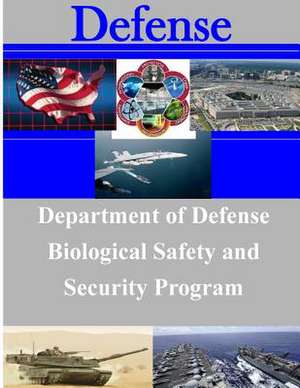Department of Defense Biological Safety and Security Program
Autor Office of the Under Secretary of Defenseen Limba Engleză Paperback
Preț: 99.55 lei
Nou
Puncte Express: 149
Preț estimativ în valută:
19.05€ • 20.70$ • 16.02£
19.05€ • 20.70$ • 16.02£
Carte disponibilă
Livrare economică 31 martie-14 aprilie
Preluare comenzi: 021 569.72.76
Specificații
ISBN-13: 9781500901547
ISBN-10: 1500901547
Pagini: 94
Dimensiuni: 216 x 279 x 5 mm
Greutate: 0.24 kg
Editura: CREATESPACE
ISBN-10: 1500901547
Pagini: 94
Dimensiuni: 216 x 279 x 5 mm
Greutate: 0.24 kg
Editura: CREATESPACE
